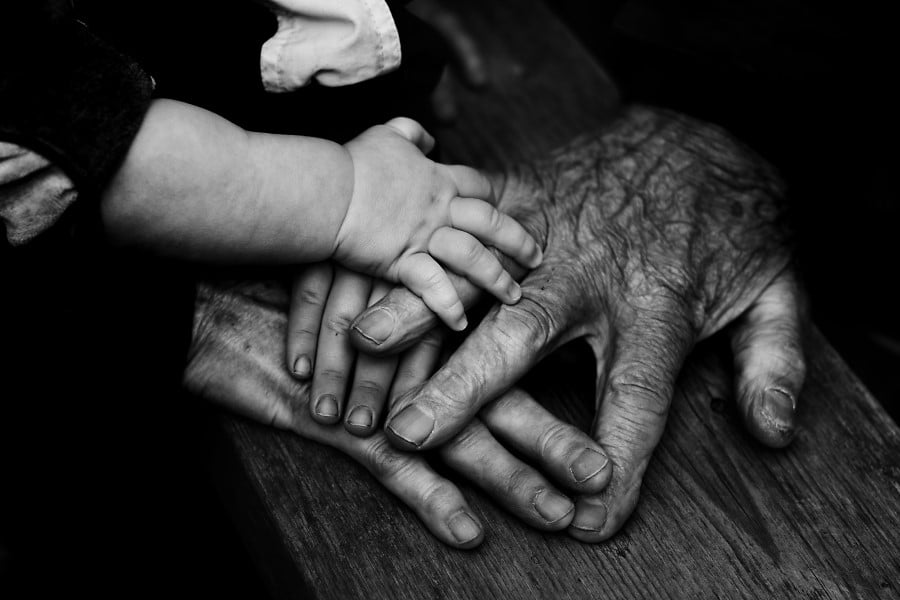Notizie per Categorie
Articoli Recenti
- [In preview] Public Preview: Azure Blob-to-Blob migration made simple with Azure Storage Mover 18 Dicembre 2025
- AI transformation in financial services: 5 predictors for success in 2026 18 Dicembre 2025
- New Microsoft e-book: 3 reasons point solutions are holding you back 18 Dicembre 2025
- [In preview] Public Preview: Service Bus SDK type bindings in Azure Functions for Node.js 17 Dicembre 2025
- [Launched] Generally Avaailable: Azure SQL updates for early December 2025 17 Dicembre 2025
- [In preview] Public Preview: Use Azure SRE Agent with Azure Cosmos DB 17 Dicembre 2025
- Access Fabric: A modern approach to identity and network access 17 Dicembre 2025
- [In preview] Generally Available: Azure NetApp Files cross-zone-region replication (CZRR) 16 Dicembre 2025
- [In preview] Public Preview: Azure NetApp Files advanced ransomware protection 16 Dicembre 2025
- Defending against the CVE-2025-55182 (React2Shell) vulnerability in React Server Components 15 Dicembre 2025
Microsoft for Public Health and Social Services: 3 ways technology can help protect vulnerable populations
An alarming number of the world’s population is considered vulnerable in some way. This vulnerability may be due to factors such as poverty, food insecurity, disability, lack of access to healthcare, limited education or job opportunities, exposure to violence or conflict, or other forms of marginalization. And while public health and social services agencies endeavor to protect, enhance, and enrich the wellbeing of their communities, they struggle with intense programmatic demands: poverty, homelessness, refugee and migrant crises, aging demographics, vulnerable children, substance addictions, behavioral health disorders, and more.
As part of our mission to empower every person on the planet to achieve more, Microsoft partners with public health and social service organizations to enable aware, connected, and coordinated community care workers so they can deliver optimal outcomes for those struggling within their communities.
While there are innumerable ways technology can help provide coordinated care for vulnerable populations, here we highlight three specific ways Microsoft customers are innovating to do so.
1. Improve internal processes using automation
According to Gartner, “Government employees are too often battling with friction in antiquated citizen-facing and back-office systems and increasing cycle completion times, leaving them frustrated and sometimes cynical.”1 Community care workers are often under more strain than the average government employee given the emotional demands of their roles. They chose this line of work to help those in need, and every manual or inefficient process means less time they can spend making a difference. Automating processes and reducing administrative burdens can lead to better community outcomes and better employee retention. Per IDC, “by 2024, 60 percent of agencies will deploy no-code or low-code platforms to aid IT and non-IT staff and swiftly roll out digital programs and constituent services.”2
Samhall AB, a Swedish social services organization, helps people with disabilities find work, providing them with the skills and confidence needed to build a future career. And while Samhall AB experienced success, they faced internal challenges due to the inefficiency of legacy applications and technology. Performing credit checks for new clients was a particularly laborious and inefficient process that caused confusion between departments, long response times, and additional work.
Using Microsoft Power Platform, Samhall AB automated its manual credit check process, reducing the credit team’s email workflow from 30 minutes to five, and cutting the typical lead time from five days to two. Since Samhall AB already had the Microsoft Power Platform and Dynamics 365 Sales, the project only took six weeks to complete from conception through testing, demonstrating the speed and power of low-code technology. Their amazing results motivated other teams to modernize processes as well, and they now have almost twenty Power Apps.
“We’ve been able to empower our employees to achieve more with less and focus on what matters mosthelping people with disabilities find gainful employment,” shares Osvaldo Filliettaz, who is responsible for delivery, sales applications, and Microsoft Power Platform at Samhall AB.
2. Break down organizational silos with blockchain and collaboration tools
A vulnerable member of the community may receive assistance from and interact with various agencies and organizations. But unfortunately, due to data silos across organizations and disparate, yet related systems, information is often not shared across groups, and actions do not progress in real time with proper coordination. This can result in compounding, even catastrophic, incidents involving vulnerable people that trigger unintended consequences and costly measures to correct.
While the ultimate vision is full integration among related social care entities, that requires wide scale policy change. In the meantime, agencies around the world are using a variety of tools to enable multidisciplinary teams of people to collaborate for the sake of vulnerable people. For instance, when law enforcement, social services, education, healthcare, benefits, and the legal system are aware and working together, better outcomes prevail.
A blockchain service can help government agencies create a shared, highly secure digital record for individuals. Anybody who has access can add a block of data, but once a new block is added to the chain, nobody can remove or change it. In a social services scenario, this could serve as a way for multiple parties involved in a person’s care to share information and see what care has been administered in the past. Instead of hospitals, municipalities, specialist health providers, addiction-treatment facilities, and other organizations keeping their own records, everyone is working with the same set of case notesso past mistakes don’t get repeated, and the individual gets a better standard of care.
Another way technology can help break down silos is via modern collaboration tools, like Microsoft Teams. For example, the Illinois Department of Children and Family Services (DCFS) works to keep children safe by strengthening and supporting families. When children enter the system, they must reestablish safety, permanence, and well-being. The DCFS recognized a need to maintain the connection between children, families, and caseworkers, and partnered with Microsoft to develop the Microsoft Teams Youth App.
This embed requires accepting cookies from the embed’s site to view the embed. Activate the link to accept cookies and view the embedded content.
The app provides remote, streamlined communication across stakeholders involved in a child’s casecase workers, counselors, foster parents, biological parents, attorneys, and service providers. What used to take multiple individual calls can now be achieved via two messages in the Teams Youth App. This efficiency gain frees up caseworkers to spend more time with the children and other families. Foster parents appreciate that all communication now happens in one place, providing a more convenient and responsive experience. Even the children use the app to communicate with their caseworkers, giving them more privacy and helping to establish better, trust-based relationships.
3. Monitor the well-being of isolated individuals with the Internet of Things
The World Health Organization (WHO) estimates that by 2050, 22 percent of the population will be over the age of 60. As governments try to keep up with these growing demands, in-home care is a way to contain costs and improve an aging individual’s overall well-being and care experience. Beyond the elderly, there are other segments of the population that are isolated or home-bound for various reasons whose welfare is often overlooked due to a lack of connection to community resources. Harnessing the power of the Internet of Things (IoT), social care providers and health practitioners can create and maintain a full picture of an isolated individual. Data gathered from wearable or other in-home devices can detect, troubleshoot, and resolve patient issues in real-time.
For example, caregivers can equip elderly patient’s homes with sensors embedded in the floor and furniture for issues ranging from “slip and fall” detection to signal an alert to the caregiver if the patient has remained in bed for an extended period. These sensors, combined with wearable technologies that monitor the patient’s vital signs (for example, heart rate, respiration, blood pressure, and more), can provide vital information to the patient’s care team.
A better future for all
Public health and social care providers are, and will always be, the key to providing coordinated care for vulnerable populations. So “thank you” to all those working humbly and tirelessly to improve their communities. And while we all dream of a day where poverty, homelessness, inequity, violence, and marginalization don’t exist, Microsofttogether with our partnersis committed to helping social care providers worldwide with technology to help them reach more people and drive greater community impact.
Learn more about the Microsoft for Public Health and Social Services team and our commitment to protecting and improving the health of people and their communities.
Microsoft for Public Health and Social Services
Creating opportunities for safety, wellness, and prosperity around the globe.

2IDC FutureScape: Worldwide National Government 2022 Predictions, Doc # US47241921, October 2021.
GARTNER is a registered trademark and service mark of Gartner, Inc. and/or its affiliates in the United States and internationally and is used herein with permission. All rights reserved.
The post Microsoft for Public Health and Social Services: 3 ways technology can help protect vulnerable populations appeared first on Microsoft Industry Blogs.
Source: Microsoft Industry Blog

